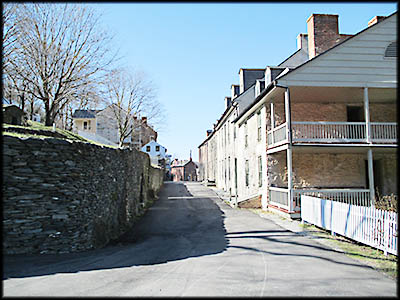Harpers Ferry


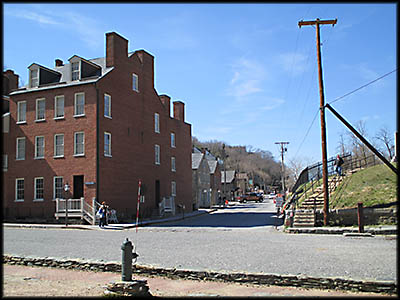

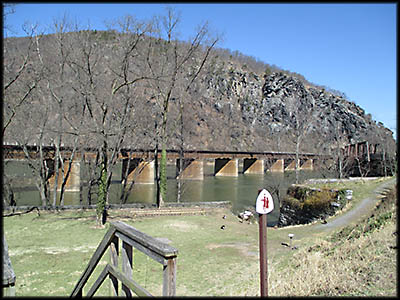
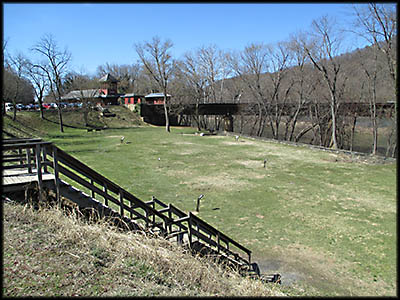
With the exception of John Brown’s Fortress, this is all that remains of the armory.
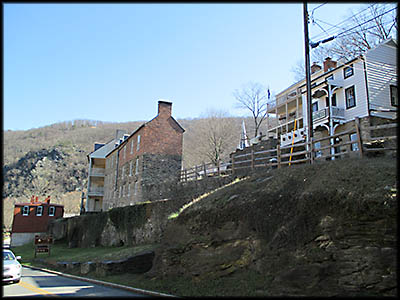
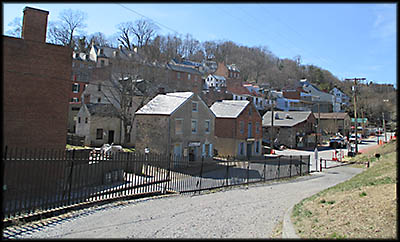
This telescope belonged to John Cook, one of those who participated in John Brown’s raid on the armory.
It is a wonderful feeling to be standing in a place where significant historical events occurred. Go to Harpers Ferry and that sentiment is amplified many times. This small town, which sets at the confluence of the Potomac and Shenandoah Rivers, has been visited by a wide range of important figures from American history such as Meriwether Lewis, Thomas Jefferson, John Brown, Robert E. Lee, Thomas Jonathan “Stonewall” Jackson, and W.E.B. Du Bois. (I’m sure significant women also visited, but my search for examples came up empty.)
Harpers Ferry National Park spans across three states: Maryland, Virginia, and West Virginia. Another national park, the Appalachian Trail, runs right through it. The park’s official visitors’ center and parking lot are outside of town. After paying $10 to enter, a shuttle takes riders to their destination and back. It is best to do it this way because there is little parking in the town itself and the shuttles service runs continuously while the park is open.
Harpers Ferry National Park spans across three states: Maryland, Virginia, and West Virginia. Another national park, the Appalachian Trail, runs right through it. The park’s official visitors’ center and parking lot are outside of town. After paying $10 to enter, a shuttle takes riders to their destination and back. It is best to do it this way because there is little parking in the town itself and the shuttles service runs continuously while the park is open.
President George Washington personally chose Harpers Ferry to become one of the United States’ armories in large part because the the Potomac and Shenandoah Rivers run fast enough to move the waterwheels needed to power the town’s factories. I always envisioned the armory as a single building, but it was in fact a series of them, each a workshop with a specific purpose.
When federal troops abandoned the armory at the outset of the Civil War, they destroyed all the structures save for the one in which John Brown and his compatriots barricaded themselves during their ill-considered raid. Now known as John Brown’s Fortress, in 1891 it was moved to Chicago to be displayed at the world’s fair there, the one at which Doctor H.H. Holmes went on a killing spree. In 1895 after plans to convert the building to a stable were scrapped, was placed on a farm near Harpers Ferry. In 1909 Storer College purchased and moved it to their campus. In 1968 the National Park Service moved and placed it about 150 feet from its original location. It has two rooms, one of which you can enter and the other you can only look into through the windows. Both were disappointing. One contains a hodgepodge of assorted items and the other a couple of fire hoses.
When federal troops abandoned the armory at the outset of the Civil War, they destroyed all the structures save for the one in which John Brown and his compatriots barricaded themselves during their ill-considered raid. Now known as John Brown’s Fortress, in 1891 it was moved to Chicago to be displayed at the world’s fair there, the one at which Doctor H.H. Holmes went on a killing spree. In 1895 after plans to convert the building to a stable were scrapped, was placed on a farm near Harpers Ferry. In 1909 Storer College purchased and moved it to their campus. In 1968 the National Park Service moved and placed it about 150 feet from its original location. It has two rooms, one of which you can enter and the other you can only look into through the windows. Both were disappointing. One contains a hodgepodge of assorted items and the other a couple of fire hoses.

After getting off the shuttle, my traveling companion and I headed to local visitors’ center (not to be confused with the one by the aforementioned parking lot). Run by the National Park Service, a volunteer ranger gave us one of the most entertaining, informative and enthusiastic lectures I’ve ever heard. Specifically, he spoke about the history of Harpers Ferry. The ranger in question is Bert, and if you are visiting and can attend his talk, you will not regret it. Among other things, he taught me the difference between armories and arsenals. Armories make weapons and arsenals store them.
Beyond being an industrial center dedicated to the creation of weapons for the United States, Harpers Ferry was a commercial hub because it was the farthest point up the Potomac an ocean-going vessel could sail. From here goods were taken west using the Chesapeake and Ohio Canal or the Baltimore & Ohio Railroad. The town’s prosperity lasted until the Civil War during which it was virtually leveled, having changed hands eight times. While its lost industry would never return, in 1867 a primary school to educate ex-slaves was founded by Reverend Dr. Nathan Cook Brackett. Brackett’s seed money of $10,000 had come from John Storer of Sanford, Maine, with the stipulation that the school had to accept students of all races and both genders. In time it evolved into Storer College, which unfortunately shuttered after it lost federal and state funding post-Brown v. The Board of Education. It was here W.E.B. Dubois and those involved with the Niagara Movement—a secret manifesto for equal rights—met to discuss what would ultimately become the NAACP.
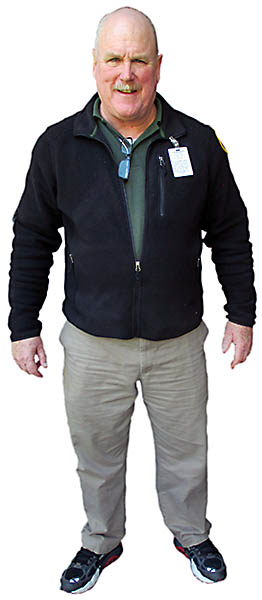
This is Bert. You will find him in the Visitor’s Center in the town proper. If he is there and you get the chance, listen to his lecture. You won’t be disappointed.
Many of the town’s historic buildings contain museums dedicated to different subjects. One, for example, is about John Brown, while another, Black Voices, examines the town’s African American history. Visitors are hardly confined to the buildings operated by the National Park Service. There are many excellent locally owned businesses to patronize as well as a rather spectacular-looking Roman Catholic Church that seems a bit out of place in the heart of Baptist country until you learn of its history. When the Chesapeake and Ohio Canal was being dug here, hundreds of Irish were brought in to do the work. And since most were Roman Catholic, it was built for them.

This is one of several
ruins throughout the town.
ruins throughout the town.
Upon arriving I had presumed there was about an hour worth of stuff to see. Had I realized just how much history happened here and how much of it still survives, I’d have come much earlier so I could spend a full day. For lack of time I missed many things, including Storer College, the gravesite of Robert Harper (the man who founded the town), a blacksmith shop, a chance to cross a footbridge over the Potomac River, and Jefferson’s Rock, the place from which Thomas Jefferson viewed the area, then wrote about it in his Notes on the State of Virginia.🕜
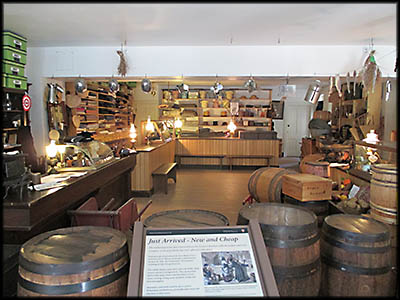
General Store
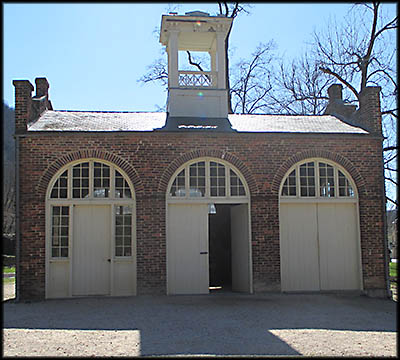
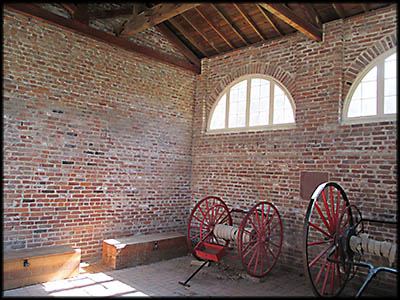
John Brown’s Fortress
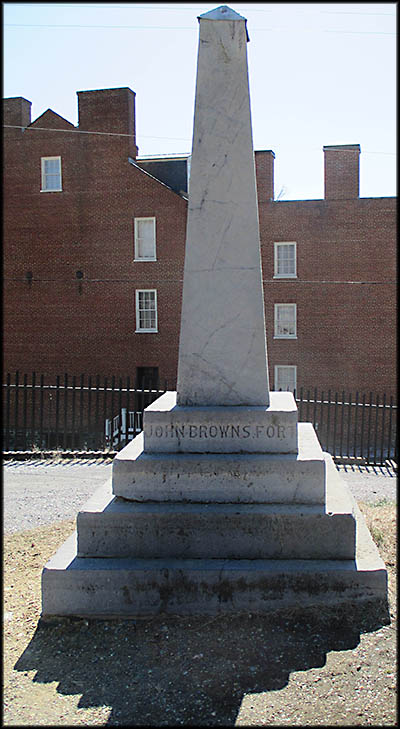
John Brown’s Monument
